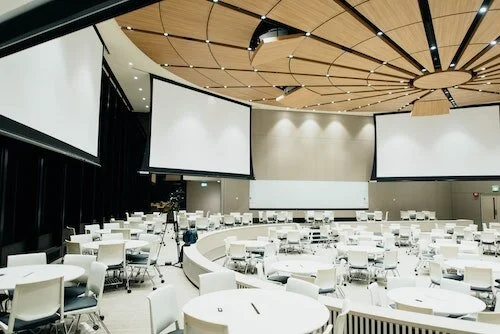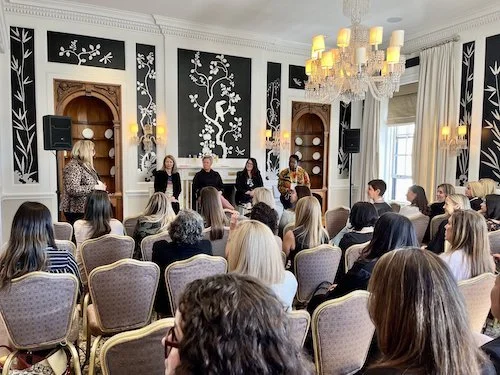Integrating sustainability into our professional and personal lives is an evergreen process. From carrying reusable shopping bags, to forgoing plastic straws, to choosing The Impossible Burger on a menu, sustainability efforts have become increasingly mainstream as awareness around the environmental impact of our habits grows.
Guided by the familiar mantra to “reduce, reuse, recycle,” we’re highlighting some ways the events space can better practice #goinggreen.
Reduce.
Go digital. - Put the agenda online! In addition to having the agenda on the event website, explore having your own app created or using a third party software, such as Bizzabo, to build out your agenda digitally. Often, these apps are interactive, allowing attendees to “favorite” sessions and message speakers. The best part? No need for a reprint should you have a last-minute change.
Cut carbon through catering. - If there’s food at the event, opt for wooden or compostable utensils and dishes. Catering companies are typically able to provide more eco-friendly alternatives to styrofoam plates or plastic forks—you just need to ask! Better yet, have the caterers bring compostable bins for any leftover food that can’t be donated. And don’t forget: no plastic straws! When ordering food, stick to a heavily vegetarian menu. For meat options, opt for poultry, as beef has a much heftier environmental impact—one five-ounce steak omites 331kg of carbon dioxide into the atmosphere, versus 64kg omitted by chicken. That’s equivalent of saving 29.6 gallons of gas, all by switching out one person's meal. (Washington Post, 2017).
Say goodbye to goodybags. - Stray away from goodybags! If you feel it is necessary to give your guests a thank you, reusable tote bags are a great option.
Reuse.
Give your materials a longer shelf life. - Having the year listed on the event website and certain materials is extremely important for clarity, but does it need to be printed on notebooks, T-shirts, and pens? If not, this is a great opportunity to reuse! Anything left over or unused from your event that year can be saved for the next edition.
Say no to plastic water bottles. - Make your event a plastic water bottle free zone! Encourage attendees to bring their own reusable water bottle, to be filled by water fountains or water refill stations around the venue.
Recycle.
Add recycling bins. - While it may seem obvious, ensure there are plenty of recycling bins throughout the event. Place them near trash cans to avoid someone tossing a recyclable item simply for convenience.
Have a donation plan in mind for left over items. - When event day finally comes to a close, take an inventory of what’s left over. Food can go to a homeless shelter or food bank, and explore donating other left-over materials to local classrooms, The Goodwill or The Salvation Army.
Interested in learning about how cred can promote and plan your next event? Connect with us at events@credpr.com.


















